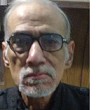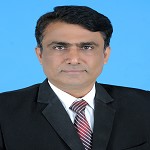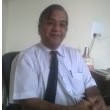Case law citation
 KASINAGALINGAM S
(Querist) 15 October 2011
This query is : Resolved
KASINAGALINGAM S
(Querist) 15 October 2011
This query is : Resolved
Sirs,
1) Is there any CASE LAW CITATION (In india or and in Foreign) for question of fact related to a person's Legal Battle to establish that he is surviving as against his own Death Certificate issued by state?
2)Which branch of Law provides for the evidence as to the survival of Human Being?
3) What is the exact legal term or Legal Language for phrase Mental Agony of a person who hears that he is dead?
Regards & Thanks, S. Kasi.
 Shonee Kapoor
(Expert) 15 October 2011
Shonee Kapoor
(Expert) 15 October 2011
There was a news-report sometime back about a similar case in Bihar.
There should be case law w.r.t. the same
Need to find out.
Regards,
Shonee Kapoor
harassed.by.498a@gmail.com
 ajay sethi
(Expert) 15 October 2011
ajay sethi
(Expert) 15 October 2011
read this interesting article
www.damninteresting.com/the-association-of-the-dead/Cached
In 1976, a farmer in northern India became alarmed when he was informed of his own death. Lal Bihari was in the process of applying for a loan when the bank representative delivered the bad news, and it wasn’t just that his loan had been denied. He was clearly a breathing, animated, fifteen-year-old, and he exhibited none of the classic symptoms of zombiism, yet government records indicated that he was no longer among the living. There was even a death certificate bearing his name.
There was no arguing that he appeared to be alive, but such evidence turned out to be insufficient to correct the error. After some investigation Bihari learned that his situation was not due to some administrative blunder, but rather it was due to an act of fraud. An unscrupulous uncle had bribed a government worker to provide a false death certificate, as well as bribing another fellow at the local Land Registry Office. For less than $100, the uncle had gained the title to Bihari’s farmland in Uttar Pradesh, leaving no legally living soul to challenge the claim. As Lal Bihari began the lengthy effort to bring himself back to life and reclaim his stolen lands, he discovered that there were many others like him, and that the death-by-paper practice was widespread in the region of India known as the “badlands.”
In order to bring attention and justice to the throngs of the undead , Bihari formed Mritak Sangh, the Association of the Dead. Many were worse off than he, suffering beatings and threats from the family members who had defrauded them. Many of them were even in danger of losing their real lives at the hands of those who had profited from their “demise.” No land owner was completely safe from the treachery, including a a man named Maha Prasad who worked as a police constable for six years while legally dead. Over time, Mritak Sangh’s membership grew over 10,000– with some estimates as high as 20,000– though no official tally has ever been made. Apparently the culture of fraud and theft is fertilized by a mixture of scarce farmland, high crime rate, and fierce family rivalries.
For eighteen years Bihari battled the bureaucracy and corruption in an effort to once again be listed among the living. Finding that all official channels led to dead ends, Bihari resorted to more dramatic measures. He arranged his own funeral, applied for a widow’s pension for his wife, kidnapped the son of the uncle who stole his land, threatened murder, threw leaflets at lawmakers, publicly insulted judges, and even tried running for Prime Minister. He went so far as to add the word “Mritak”– meaning “dead”– to the end of his name. “The Late Lal Bihari” created these public scenes in hopes of being arrested and thereby forcing the government to acknowledge his existence, but each time he was merely beaten by police or rebuked for wasting officials’ time.
At long last, in 1994, a local District Magistrate helped restore Bihari to legal life and his lands were returned to him. He was thirty-three years old. After over eighteen years as a dead man– more than half of his life– he relinquished the land to the very uncle who had originally arranged for his premature death. His uncle was so ashamed that he begged Bihari for forgiveness.
Following his own success, Lal Bihari the Living has continued his efforts to raise the dead in India’s badlands. At an official tally in 1999, the Association of the Dead had helped to resurrect roughly thirty people by virtue of having their death certificates annulled, but of those thirty only four have had their lands restored. In 2003 Bihari was awarded the Ig Nobel Peace Prize– a parody of the famous Nobel Peace Prize– citing his extensive and selfless “posthumous activities.”
It is rumored that India’s movie capital of Bollywood is planning to produce a film adaptation of Bihari’s near-death experience. Perhaps such a movie will help bring needed attention to the thousands of walking undead whose lands have been misappropriated by ruthless family members, and help bring an end to this widespread practice. After all, trifling with zombies rarely– if ever– works out for the best.
 prabhakar singh
(Expert) 15 October 2011
prabhakar singh
(Expert) 15 October 2011
Yes Mr. Sethi!
you are right.A 3 decades back incidence.
 KASINAGALINGAM S
(Querist) 15 October 2011
KASINAGALINGAM S
(Querist) 15 October 2011
Dear Ajay Sethi Sir,
Thanks.
S.Kasi, B.B.B., B.G.L.,( LL.B.)
 Sankaranarayanan
(Expert) 15 October 2011
Sankaranarayanan
(Expert) 15 October 2011
mr sethi take long time to answer the query ,i do agree his opinion
 ajay kumar mishra
(Expert) 15 October 2011
ajay kumar mishra
(Expert) 15 October 2011
Respected Sethi sir,
I would like to convey my special thanks for your tiered less and valuable reply but is there any relief through the court?
 Raj Kumar Makkad
(Expert) 15 October 2011
Raj Kumar Makkad
(Expert) 15 October 2011
I have tried my best to trace out relevant citation of Allahabad High Court wherein a petition was filed by Mritak Sangh against State of UP in the similar matter.
 ajay sethi
(Expert) 15 October 2011
ajay sethi
(Expert) 15 October 2011
read the article it is self explantaory . he made an application to district magistrate who passed orders in his favour
 Raj Kumar Makkad
(Expert) 15 October 2011
Raj Kumar Makkad
(Expert) 15 October 2011
Sethi! A judgment was passed by Allahabd High Court in favour of "Mritak Sangha" which was created by various persons of UP who had been got declared as dead by either their family members or goons and even their death certificates had been obtained and thereafter their properties had also been grasped. This writ was decided in their favour and against State of UP.
 prabhakar singh
(Expert) 17 October 2011
prabhakar singh
(Expert) 17 October 2011
@@ KASINGALINGAM !
&&&&&&&&&
@@Mr.Makkad !
DEAR SIRS !
THE STORY IS FROM MY OWN DISTRICT.BUT IT TOOK ME THREE DAYS AS I WAS MISSING THE NUMBER OF THE WRIT PETITION[ 29806 OF1999 ]ALLAHABAD HIGH COURT.
THE JUDGEMENT IS POSTED BELOW::
Allahabad High Court
Indian Kanoon - http://indiankanoon.org/doc/219835/
Association Of Dead People, ... vs State Of U.P. And Others on 7 January,
2000
Equivalent citations: 2000 (1) AWC 663
Author: R S Dhavan
Bench: R S Dhavan, B Dikshit
JUDGMENT
Ravi S. Dhavan, J.
1. Submissions in this matter had closed yesterday with every one present at the Bar unanimous on
their opinion that in a matter which has now surfaced with such magnitude, it would be the fittest
step that it be referred to the National Human Rights Commission under the Protection of Human
Rights Act, 1993. The Court has accepted the contention made unanimously at the Bar.
2. The origin of these proceedings rest on a media report highlighted in the TIME magazine, Asia
Edition, July 19, 1999, at page 29. The correspondent one Michael Fathers along with Meenakshi
Ganguly, apparently made an on the spot enquiry and published an Article entitled "Plight of the
Living Dead : Indian Farmers declared deceased by unscrupulous relatives must prove they're
alive to regain their land." As the matter is now being sent by the High Court to the National
Human Rights Commission, for its convenience the Article as published" is being reproduced :
"The Eastern Fringes of India's Uttar Pradesh State are known as the bad lands, a place where
hired killers can be bought for as little as $10 and peasant farmers eke out a living on plots as two
ingredients--crime and a shortage of agricultural land--throw in a large chunk of greed, mix in
some family rivalry and you come up with an ingenious scam. Just head for the nearest Land
Registry Office, bribe an official, declare the owner dead and transfer the land to your name.
"I am here, I'm alive," says Lal Bihari told revenue officials after discovering he was listed as
deceased in 1976. "That may be so", an unruffled clerk replied "but according to my books you're
dead." it took Lal Bihari 18 years to get his life and his land back. During that time, he added the
word mritak or dead, to his name and to prove that he was living sought arrest, tried to run for
Parliament, kidnapped the son of the uncle who had stolen his property, threatened murder,
insulted judges, threw leaflets listing his complaints at legislators in the State Assembly and
demanded a widow's pension for his wife. Each time he was either beaten up by police or rebuked
for wasting officials' time. Unable to make headway, Lal Bihari. The dead, sought the company of
other ghosts in Uttar Pradesh and found an entire underworld of the deceased and dispossessed.
Last month a dozen of them demonstrated outside the Uttar Pradesh assembly to publicize their
fate, demanding an official investigation into land registry transactions to prevent others from beingfate, demanding an official investigation into land registry transactions to prevent others from being robbed,
Lal Bihari is not sure how many members there are in his association of dead people. He's vague
about its constitution, it has no one of importance in paying any attention at least for now. But in his
home district of Azamgarh, 220 km. south east of the State capital Lucknow. Lal Bihari and his association have become a magnet for the dead souls of the region. He receives letters and secret visits from victims or their relatives hoping he can restore their property. "I've heard about you from friends," wrote a young man late last month. "Exactly the same thing happened to my aunt when her husband died. Can you help?"
Like other eastern districts in Uttar Pradesh, Azamgarh, is overcrowded. Land, the only source of
income and status for most residents is scarce. Holdings are getting smaller, divided and subdivided
as families grow larger. Rich and poor find it difficult to resist stealing land from an absentee uncle,cousin, nephew, widow or any weak and vulnerable relative. The quickest simplest way is to bribe land records officials--it costs between $1 and $50, depending on the size of the plot and the wealth
of the farmer--declare a person dead and grab his share of the property. "It is a clever ploy," says
Lal Bihari. "You don't get your hands dirty by committing murder, and yet the person is as good as
dead."
Kailash, 50, a landless farm labourer, has moved to Lal Bihari's village. Kailash's second cousins
have threatened to kill him if he tries again to claim back the 2,000 sq. m. of land, Inherited from
his father, that they stole from him. When he first went to Court to tell the Magistrate he was alive,
his cousins beat him. Lal Bihari is trying to revive the case, now lost in India's labyrinthine judicial
system. Further complicating his task is that Kailash is not too keen about the effort on his behalf:
"It is better to be dead on paper than to be really dead. I think my cousins might actually kill me."
Lal Bihari flings open his arms in exasperation. "Most of the people I fight for have no courage at
all," he says. "I would not be surprised if they told their relatives I was forcing them to fight."
Bhagwan Prasad Mishra, 75, is not afraid to fight. A pillar of the Azamgarh community, he has been
officially dead since 1977, when four young nephews who managed a family property transferred a
half-hectare of his land to their name. Armed with a rifle. Mishra visited the boys and got them to
sign an affidavit admitting they committed fraud and had no claim to the land. The affidavit was
filed with the land court and forgotten. Subsequently petitions to have Mishra declared "undead"
have been similarly mired in legal procedures. Yet such is the strength of family in this part of India
that Mishra holds no grudge against his tormenters. "My nephews show me great respect." he says.
Indeed, when Lal Bihari finally recovered his land in 1994, he gave it back to the very uncle who
had stolen it. "He was so ashamed he begged me for forgiveness."
Not everyone can afford such magnanimity "most victims are widows, or someone sick or simple
who are listed as dead." Lal Bihari says, Jhulari Devi, 85, was declared dead and chased from the
family farm in the 1970s after the death of a son. Her case has been stalled in the Courts for morefamily farm in the 1970s after the death of a son. Her case has been stalled in the Courts for more
than 25 years. Paltan Yadav was pushed off his land in 1988. His relatives mockingly told him.
"Paltan is dead. Who are you tilling his land?" Penniless, he become a holy man. Once he gets his
land back, Yadav says, he will drop his safron robes of celibacy and find a bride. Says Lal Bihari :
These people cannot fight alone. They have no money, no brains and no strength. I now believe it
was my destiny that I became a dead man." And if he can help other unfairly deceased souls, that
will be more than anyone who is alive in India has bothered to do for them."
3. The High Court had taken suo motu notice of this news report and the cause was registered as
Writ Petition No. 29806 of 1999 : Association of Dead People through Sri Lal Bihari and another
(Lal Bihari himself) v. (1) State of U. P. through the Secretary (Revenue) U. P. Government,
Lucknow. (2) Collector, Azamgarh, (3) Registrar, Land Registry Office, Azamgarh, (4) Sub
Divisional Officers of the District of Azamgarh. On 21st July 1999, the Court Issued notice of motion
to the State of Uttar Pradesh. On that day the Court had appointed two learned senior counsel at
the Bar to act as amicus curiae. These were Messrs Suresh C. Tripathi and Prabodh Gaur,
Advocates. The Chief Standing Counsel, U. P.. Mr. Ashok Mehta, also appeared in response to the
motion which had been issued. At this stage the Court places on record that this case was taken by
the Chief Standing Counsel, U. P., in its true spirit as a public Interest litigation, regard being had to
the circumstances of the case and the Court appreciates that at no stage the Court get the
impression that this matter was treated as an adversary litigation. It was suggested by the Chief
Standing Counsel, U. P., that as an initial step the District Magistrate. Azamgarh, may be required
to put in repeated news inserts in the local Hindi newspapers, local radio and the local television
network announcing throughout the District of Azamgarh that if there be any persons who have
been shown in the revenue records as 'dead', but are living and their agricultural holdings have
been usurped and possessed Illegally, they may come forward and bring this aspect to the notice of
the Pradhan of his village. This information will be carried, by the local administration, and
registered with the Chief Judicial Magistrate. Azamgarh, as a complaint in accordance with law, in
addition to instituting a first information report. with the police as the law normally requires in such
situations.
4. As at that time a general election was about to take place and it was indicated to the Court by the
Chief Standing Counsel, U. P., that the district officials may be busy with the general election and as soon as the general election is over, the District
Magistrate/Collector. Azamgarb, will come forward and open a special office for receiving such
information the like of which was published in an article in the TIME magazine. By the time the
proceedings were before the Court in September, 1999, what started with a solitary case, as
highlighted by the TIME magazine, inquiries on the orders of the High Court revealed that there
was several other cases.5. Proceedings of this Court of 27 September, 1999 record that 42 cases had been discovered when tenure-holders and agriculturists, though alive, had been shown as 'dead' in the land revenue records. Interpolation of the records was accepted by the District Magistrate/Collector, Azamgarh,
as also, the aspect that the property of defenceless agriculturists has been usurped and the news
report in the TIME magazine is not a fiction but reality. in the circumstances, the Court gave
certain directions. These were : (a) the State administration will arrange for wide publicity through the public media encouraging affected persons who may have lost their land and have been shown
as 'dead' in land revenue records to register their cases ; (b) a core group be formed under the
supervision of the District Magistrate to facilitate discovery of such cases and this core group will
identify cases of the living 'dead' and file these cases before the Chief Judicial Magistrate and (c) as
these matters relate to fabricating false evidence so as to constitute a record otherwise than its true
state, it is an offence against public justice the like of which is referred to in the Indian Penal Code,1860. All such persons who may have arranged for these crimes are liable to be charged with
complaints before the Chief Judicial Magistrate.
6. By the lime the proceedings were being recorded, on November 15, 1999, the reports, which had
been filed, jointly, by the District Magistrate/Collector. Azamgarh and the Chief Judicial Magistrate.Azamgarh, the species of such cases increased to 70. By this time the Court was intimated that a Cabinet Minister of Uttar Pradesh has shown concern by requiring the Secretary, concerned, in the
Government that enquiries be opened up in these matters, where persons otherwise alive, have
been shown 'dead' in the records, the agricultural and revenue records. The Hon'ble Minister has
desired enquiries in respect of the districts of Azamgarh, Mau, Allahabad, Hardoi, Jaunpur,
Raibareitly, Deoria, Gonda and Kanpur Dehat. By now, the Board of Revenue, Uttar Pradesh had
also given instructions that all these cases throughout the State be traced out. All present at the Bar accept that the follow up action, as a practical measure, is disappointing.
7. Now it was clear that what had taken place was an organised crime against the poor, hapless and
helpless agriculturists confronted with muscle power of land mafias who could arrange, in collusion
with those in charge of keeping land revenue records, to get interpolations made by showing
persons who are otherwise alive, 'dead' on paper. Having achieved this, the agriculturists were
kicked out of their holdings. This was even worse than serfdom. A virtual reminder that the
zamindar's zamindari may have been abolished but has given way to organised gun-totting
agricultural land grabbers whom the official record keeper has adopted and accepted.
8. The Chief Judicial Magistrate complained that when notices were Issued to those against whom
allegations had been made that they were squatting on agricultural lands when original owners
were alive, but shown 'dead', the police did not come forward to assist either the District Magistrate
or the Chief Judicial Magistrate to effect service on these notices. Thus, on December 17, 1999, the
Chief Standing Counsel, U. P., made a statement that in this regard he had drawn the attention of
the Director General of Police. U. P., and advised him that his department was obliged to assist the
District Magistrate and the Chief Judicial Magistrate in these matters of the cases of the livingDistrict Magistrate and the Chief Judicial Magistrate in these matters of the cases of the living'dead', on the service of summons to the persons charged but avoiding summons and the restoration of possession to persons who are alive but were shown 'dead'. Tampering of the record,the land revenue records, was now becoming a phenomenon as if it was a second habit in the district of Azamgarh. Thus, the Court recorded on December 17, 1999 "suffice it to say that the
situation is a matter of concern for the High Court as giving an impression that the poor people can
easily lose their rights on their agricultural holdings, with records being tampered and showing
them as 'dead' and all that they can do is to cry outside and beyond the periphery of their
agricultural land that they have been ousted and there are no takers to listen to their plight and
complaint."
9. On December 21. 1999, learned Advocate General. U. P., Mr. R. P. Goyal, senior advocate,
appeared at the Bar. Learned Advocate General, U. P., made a statement that he had drawn the
attention of the Chief Secretary, Uttar Pradesh, to the state of affairs as exists in the district of
Azamgarh relating to agriculturists who have been shown in public records, that is, the land
records, as 'dead', but otherwise are alive, and their lands have been usurped by land mafias.
Learned Advocate General, U. P., made a statement that he had advised the Chief Secretary that
the state of affairs in bringing a bad name to the administration as well as to the public justice
system because the execution of the orders, in both circumstances, has to be done with the
assistance of the police. Learned Advocate General, U. P., stated that the Chief Secretary
responded by saying that he has taken the situation in hand and is looking into these matters
personally. Learned Advocate General, U. P., has also expressed his concern that he has advised
the Chief Secretary that this fear psychosis, which is now prevalent amongst those agriculturists
who have been deprived of their lands and land mafias are squatting on such illegally possessed
land, can only be eliminated by the administration giving confidence that the long arm of the law is
indeed very long and it means business.
10. By this time, the cases had swelled up to 84. Thus, on December 21, 1999, the Court recorded
that all that needs to be done at present is that (1) the advice of the Advocate General, U. P., be
acted upon and (2) suggestions as were recorded by the Court on September 27, 1999 and on
October 13, 1999 be implemented. At the request of State counsel of the State of U. P., the matter
was adjourned to January 3, 2000.
11. While submissions were being made when the proceedings resumed on January 3, 2000, and
were adjourned to January 4, 2000, learned Chief Standing Counsel made submissions which were
serious to enlist concern with the Court. The Chief Standing Counsel submitted that : (a) the last
report received from the Chief Revenue Officer, Azamgarh, is inadequate and on going through the
report seeks leave of the Court not to file this report as he himself is not satisfied with this report ;
(b) regard being had to the totality of the circumstances he is now satisfied that in this matter he must have a direct conference with the District Magistrate, Azamgarh, and (c) in this matter of
public concern those who have been dispossessed on the basis of forged records, the approach of thepublic concern those who have been dispossessed on the basis of forged records, the approach of the
local administration that nothing will be done until and unless the victims make an application to
seek redress, is itself a matter of concern.
12. While this matter proceeded on January 5. 2000, the Court was being intimated that the cases
discovered so far are nearing 90. Now, it was clear that this was a never ending process.
13. Yesterday, January 6, 2000, the District Magistrate, Azamgarh, sought leave of the Court to
make submissions. The Court permitted him. The District Magistrate, Azamgarh, informed the
Court that what has been discovered, as about 90 cases so far is only "the tip of the Iceberg". These
were his words. He , informed the Court that now he is receiving complaints about 50 or 60 a day.
It was his contention that even if half of these complaints were correct, another phenomenon is
surfacing the like of which has not been noticed even by the Court. He indicated to the Court that he
has come across entries in the land revenue records, to the effect, that possession has been
delivered to the land mafias or unscrupulous persons who, as organised crime in connivance with
the official record keeper, have arranged a state of affairs to obtain possession of lands ostensibly
under court orders, whether revenue courts or civil courts. But, on scrutiny he found that the socalled Court order did not exist. The District Magistrate explained that the land records inscribe a
fabricated endorsement of a Court order in favour of the land grabber, which mentions the
designation of the Court, and the date of the order. But when he had the matter investigated there
was no Court order, the like of which was mentioned in the land revenue records. If what the
District Magistrate has contended is the reality, then, this matter which started with a solitary case
has, indeed, crossed into beyond hundreds and will keep on Increasing,
14. What the District Magistrate, Azamgarh, has reported as first hand official Information only
confirms that public justice both in administration and the judicial system is in an embarrassing
state of ineffectiveness for the ordinary man without resources or clout. The Indian Penal Code,
1860, when it provides to deal with circumstances of false evidence and offence against public
justice had intended to deal with a law abiding society generally. There is public justice to be
delivered by the administration, also. The Courts come later. But the circumstances acknowledged
in the present proceedings reveal that the official keepers of the land records are not official in the
discharge of their obligations. Interpolation of land revenue records with official patronage is
terrorism of the Babu. There are fixers who distort truth both within the administration and the
public justice system. Munshi Prem Chand, the classical Hindi novelist, has highlighted these
themes on the village officials in his short stories. He died sixty years ago.
15. One aspect needs to be mentioned as it was brought to the notice of the Court by counsel at the
Bar. The media carried reports, while these proceedings were pending, about the affected people of Azamgarh, primarily agriculturists recorded "dead" but alive, who took out a procession in the
State capital, Lucknow, before the Houses of Legislature. They took out a procession by tying on
bamboo made 'tikhtis' meant to carry the dead for last rites, the funeral. During demonstrations,bamboo made 'tikhtis' meant to carry the dead for last rites, the funeral. During demonstrations,
these living 'dead' would rise from their bamboo 'tikhtis' shouting slogans, to the effect : We are not'dead', but are alive. The contention, by the two learned amicus curiae assisting the Court, was that
all this was of no avail and the circumstances of the living 'dead' continue.
16. Regard being had to the totality of circumstances, all at the Bar, whether the two learned amicus curiae, counsel for Lal Bihari, petitioner No. 2 or learned State counsel, that is, Chief
Standing Counsel, U. P., agree that the poor agriculturists must have protection at every given
time. An apprehension has been expressed that if the proceedings were to close, then, all those
being investigated and enquired into as a consequence of these proceedings will be constantly under
threat to their lives. Further, an apprehension has been expressed and shared equally at the Bar
that when the living 'dead' are restored possession of their agricultural lands, there will have to be a
continued protection for a very long time and in this regard the phenomena which has been noticed
in these proceedings now needs to be investigated, further, as this is a never ending story.
17. It was suggested to the Court, as the Court had expressed that a case must close also, that as
these matters relate to poor agriculturists, who are on the borderline of poverty, their agricultural
holdings are the only source of livelihood. Deprivation of this source of livelihood, and the manner in which it has taken place is a matter which concerns human rights. For any person who has been
kicked out and off his agricultural land, the matter affects life and liberty, both. Deprivation of the
source of livelihood is now well recognised as violation of Article 21 of the Constitution of India. The liberty to hold a property with confidence, specially a property which is the only source of
livelihood, stands curtailed and the affected persons are unable to live off their deprived agricultural
land. Livelihood affects life, consequentially, this affects the dignity of the individual that in poverty
he cannot defend his liberty and life. Lastly, equal protection of the laws, the Court regrets to
record and it is accepted at the Bar, is not available to these poor agriculturists.
18. The Chief Judicial Magistrate reported that he is virtually an abject spectator in issuing
summons on proceedings registered on showing the true owner as 'dead but alive, a stark reality on
official records. The Chief Judicial Magistrate reports that those who have been summoned under a
sub-poena are merrily going around their business on Ill-begotten and illegally possessed lands, yet
the police reports that those summoned are not available. This is a common syndrome of the public
justice system, of unserved summons and the freely roaming criminals, a circumstance encouraged
by the administration, the Court administration and the criminal. The paradox is that even in
Court, the terror is of the victim.
19. These cases have virtually become a phenomenon of violation of human rights. If it were one
case or two or half a dozen, this Court would have issued its writs to ensure compliance of the law.
But what the Court has on record is the concern of learned Advocate General, U. P., the concern of
Chief Standing Counsel, the concern of the Hon'ble Cabinet Minister in having taken note of this
case and the concern of the Board of Revenue in sending instructions. Concern is good, but thecase and the concern of the Board of Revenue in sending instructions. Concern is good, but the
follow up action to aid these poor agriculturists into possession must rest on an assured security to
till their land so that this ugly phenomenon of fabrication of official records and collusion between
land mafias and officials who possess these records, is broken. A solution which has not been
presented before the Court. The State must have a will to present this solution and execute it.
20. This matter needs to be further investigated, the like of which has been provided in the
Protection of Human Rights Act, 1993, and specially provided for under Section 14. The matter has
ceased to be an Individual case as prima facie it has been accepted by learned Advocate General, U.
P. and the Chief Standing Counsel, U. P., and upon the reports being scrutinised by the two learned
amicus curiae at the Bar that the case of the living 'dead' is now a reality. In so far as it was possible
and to the limit it could be done, this Court has enquired suo motu. The National Human Rights
Commission in any case has the right to intervene in any proceedings involving violation of human
rights pending before a Court 'with the approval of such Court'. The question of these poor
agriculturists approaching the National Human Rights Commission does not arise. Having lost their
agricultural holdings, otherwise having been shown 'dead' in the records, they have no source of
livelihood. The two learned amicus curiae at the Bar had submitted that they do not even have the
resources to come to the High Court or, for that matter, engage a lawyer to file a complaint before
the Chief Judicial Magistrate. They are looking for the protection of the law, the like of which is
mentioned in the Code of Criminal Procedure, 1973. The reference was made to Section 200. Thus,
the living 'dead' are expecting that the State would come to their aid as it is a crime against the
public justice system. It is contended that they are not concerned in having the presence and
personal appearance, in Court, of persons who have wielded muscle power and the officials who
may have abetted the situation. In taking confrontation with them is in itself a fearful step for them.
It has been explained to the Court that if the State were to process these cases, there is an
advantage for the presenter of the complaint. Inevitably, the District Magistrate and Collector need not be examined, as the complainant would be a public servant who has purported to act in the
discharge of his official duty. The Court will leave this aspect at this.
21. The Court had indicated to learned counsel at the Bar, the aspect of limitation, the like of which
is mentioned in sub-section (2) of Section 36 of the Act, aforesaid. The Chief Standing Counsel, U.
P., explained that in the present set of cases, limitation does not stand in the cause of the living
'dead' agriculturists. By analogy he explained that the petitioner No. 2 (whose case was reported in
the TIME magazine which gave rise to these proceedings) had been restored possession of his land
as a result of these proceedings. It was submitted, even, he can institute a complaint before the
National Human Rights Commission until such time he had remained dispossessed as from the last
date of his dispossession. One year hence he may present a complaint. The contention at the Bar,
whether by the two learned amicus curiae or the Chief Standing Counsel was, to the effect, that this
is a continuing wrong.
22. In the proceedings before this Court, there are no rivals. There are no adversaries. All counsel22. In the proceedings before this Court, there are no rivals. There are no adversaries. All counsel
have joined and are agreed that the phenomenon of the living 'dead' will need to be remedied first.
It has also been indicated to the Court that the phenomenon is not isolated to Azamgarh and the
aspect of people being shown 'dead' on the land revenue records and their lands being usurped
illegally by those who can arrange it with connivance of officials is an ugly reality.
23. In the circumstances, the Court requests the two learned amicus curiae to draw out a statement
of case for presentation before the National Human Rights Commissions along with the entire
record of the present proceedings. It will be entirely up to the two learned amicus curiue, if they so desire, to retain the cause title as it is or vary it. The statement of case ought to be presented
before the National Human Rights Commission by the two learned amicus curiae within six weeks
from today. For secretarial assistance, learned Chief Standing Counsel, U. P., has assured that his
office will render all assistance.
24. In so far as cases which have been processed and filed before the Chief Judicial Magistrate, and
those cases which are yet to be filed may continue to be filed, in keeping with the correct
perspective, that is, a complaint by a public servant. The crime is against public justice and poor
agriculturists. This process will continue until the proceedings are determined to its logical
conclusion as under the law. In addition, the circle of public justice will not be complete unless
departmental and administrative proceedings are taken out against the erring officials by the State
of U. P. Hereinafter, investigation will be as may be directed by the National Human Rights
Commission.
25. It would only be fair that the two learned amicus curiae who have assisted the Court in this
public cause be given a fee of10,000.00 each by the State of U. P., which the Chief Standing
Counsel, U. P., will arrange for and will deliver to them within a month from today.
26. The Registrar, High Court, will deliver a certified record to all counsel at the Bar, including the Chief Standing Counsel, U. P., free of charge as this is a public interest litigation.
27. As the matter new will be filed before the National Human Rights Commission. These
proceedings stand consigned.
 KASINAGALINGAM S
(Querist) 18 October 2011
KASINAGALINGAM S
(Querist) 18 October 2011
Thanks So Much Prabhkar Singh Sir.
Regards.
S. Kasinagalingam,B.B.A.,B.G.L.,(LL.B.)
 prabhakar singh
(Expert) 18 October 2011
prabhakar singh
(Expert) 18 October 2011
You are most welcome!
regards,
prabhakar
